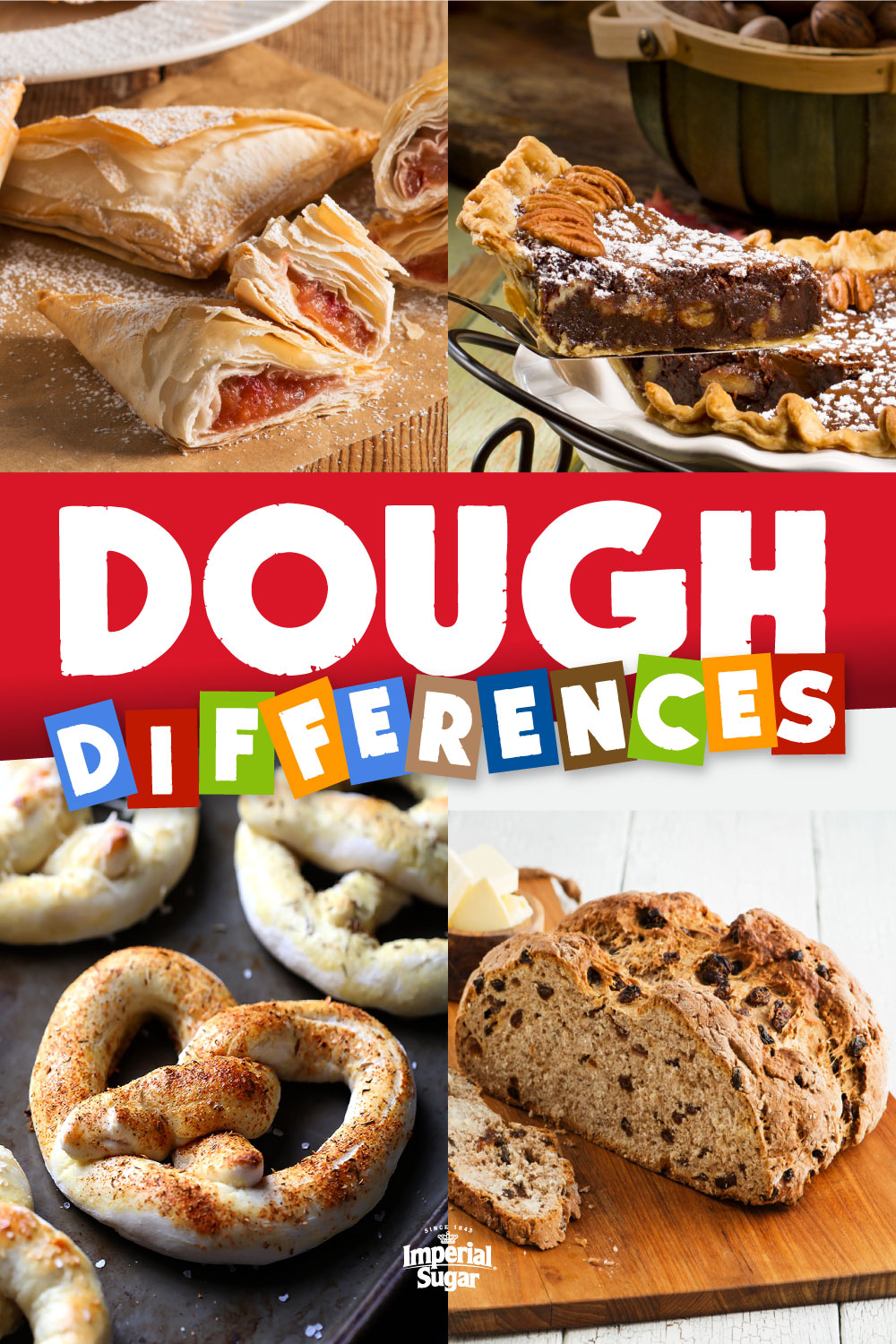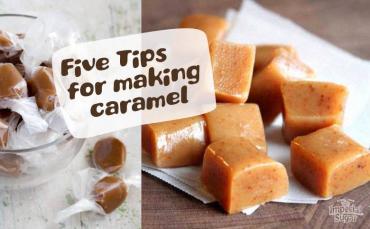
Different Types of Dough

Slapped onto a counter or slipped into a pan, dough is a diverse ingredient when baking. People have been making simple mixtures of flour, water, and fat for millennia to build a basic necessity for many of our lives. As cultures and people have developed, so have our dough-based recipes. But we have to stop and ask: what is dough, actually? How many types of dough exist and just how do we describe them? Let’s explore different types of dough together below.
Batter vs Dough
When does a batter become dough? Is dough ever a batter? All questions we’ve asked ourselves while making cookies - which are either referred to as dough or batter-built. The definition of batter: a mixture consisting chiefly of flour, egg, and milk or water and being thin enough to pour or drop from a spoon. The definition of dough is a mixture that consists of flour or meal and a liquid (milk or water) and is stiff enough to knead or roll. So, for the sake of this article, we’ll stick with covering doughs that lack eggs and/or that can be kneaded or rolled into shape. 
Leavened vs. Unleavened Dough
If we want to further subdivide our baking forays, we then go into the types of dough we can use. Traditionally, there are two categories: leavened and unleavened doughs.
Leavened Dough
Leavened dough is dough that has risen to its final form. Leavened dough achieves this rising through fermentation or the addition of leaveners (like baking soda or baking powder).
Fermented doughs are generally raised using yeast - a powerful activator that eats sugar and spits gas. In fermentation, you’ll find two types of processes — the Sponge & Dough method and the Straight Dough Method. In the Sponge & Dough method, a sponge is made and allowed to ferment for a period of time and later added to the rest of the dough’s ingredients. In the Straight Dough Method, all the ingredients are combined in one mixing session and then allowed to rise and rest together. Examples of fermented doughs include pizzas, pretzels, Beignets, and breads of all kinds (including Ciabatta, Focaccia, and most rolls.)
Quick doughs rise due to baking soda or baking powder. From our definition above, we’d generally deem these items in the “batter” category.
Unleavened Dough
Unleavened doughs belong to all of those baked treats that don’t rise in the oven (or pot), but rather stay thin or flaky. A common unleavened dough in baking is “short dough.” Most short doughs have a high percentage of fat to flour (like you’ll find in pie crusts, for instance.) Other examples of unleavened doughs include tortillas, flatbreads, crackers, and pasta. Pie dough deserves a reference all on its own. Shortcrust pastry and sweet crust pastry doughs can each be used to make pies. Both contain high amounts of fat, which help the dough get its flaky consistency. Sweet crust pastry is just like short crust pastry, but just has an extra helping of sugar sneaked in. It’s much like our Pure Butter Pie Crust recipe. Some chefs define pie crusts as either flaky or mealy. A flaky crust is used for non-liquid or cooked fillings. It’s achieved by keeping your fat pieces larger after combining. Mealy dough is used for pies with a liquid or custard filling. It’s dense, so it can withstand heavier fillings, and is made by rubbing your fat and flour down to cornmeal-sized pieces.
Laminated vs. Non-Laminated
In the pastry world, the final step of categorization comes down to non-laminated and laminated doughs. These are often not confined by their leavened state, as a non-laminated or laminated dough can be leavened.
Laminated Pastry
Laminated pastry dough is made by folding a piece of pastry onto itself many times. In between each layer is a thin slathering of butter. This creates a multi-layered and flaky finished dough. Unleavened examples of this kind of dough are puff pastry and phyllo dough. A leavened version is a croissant.
Non-Laminated Pastry
These pastries have dough that has not been folded onto itself many times. Unleavened versions of these types of dough include choux (used in profiteroles and eclairs) and pie dough. A leavened version is a brioche.
Each type of dough has unique characteristics that make it perfect for certain baked goods. Understanding the differences between them can help you choose the right type of dough for your recipe and achieve the best results.
PIN IT

 then
then  Add IMPERIAL SUGAR to Home Screen
Add IMPERIAL SUGAR to Home Screen




Sign in or create an account
You need an account to like and rate recipes, comment, and share a recipe with the community.
Continue with Facebook